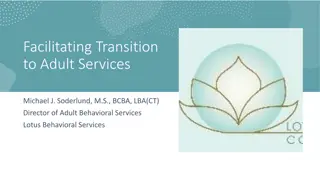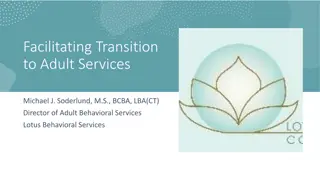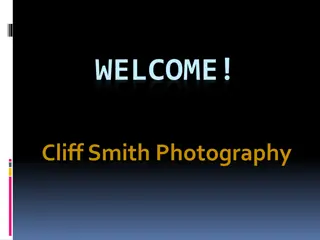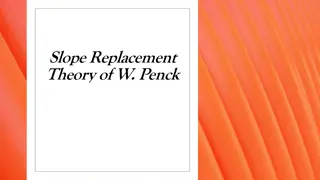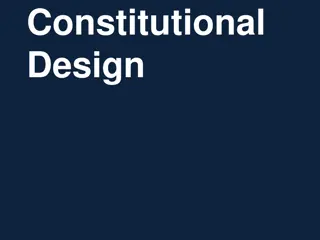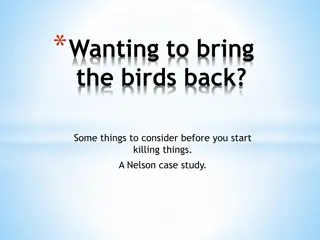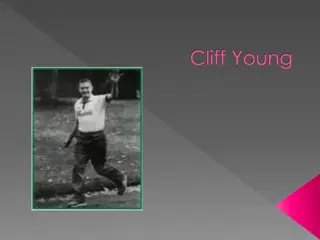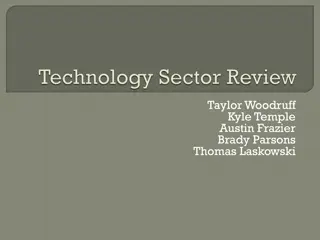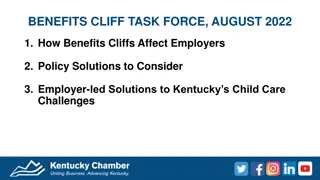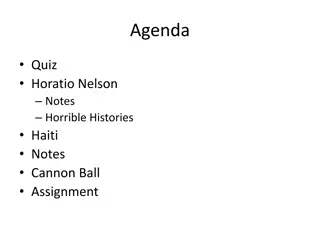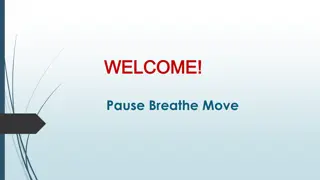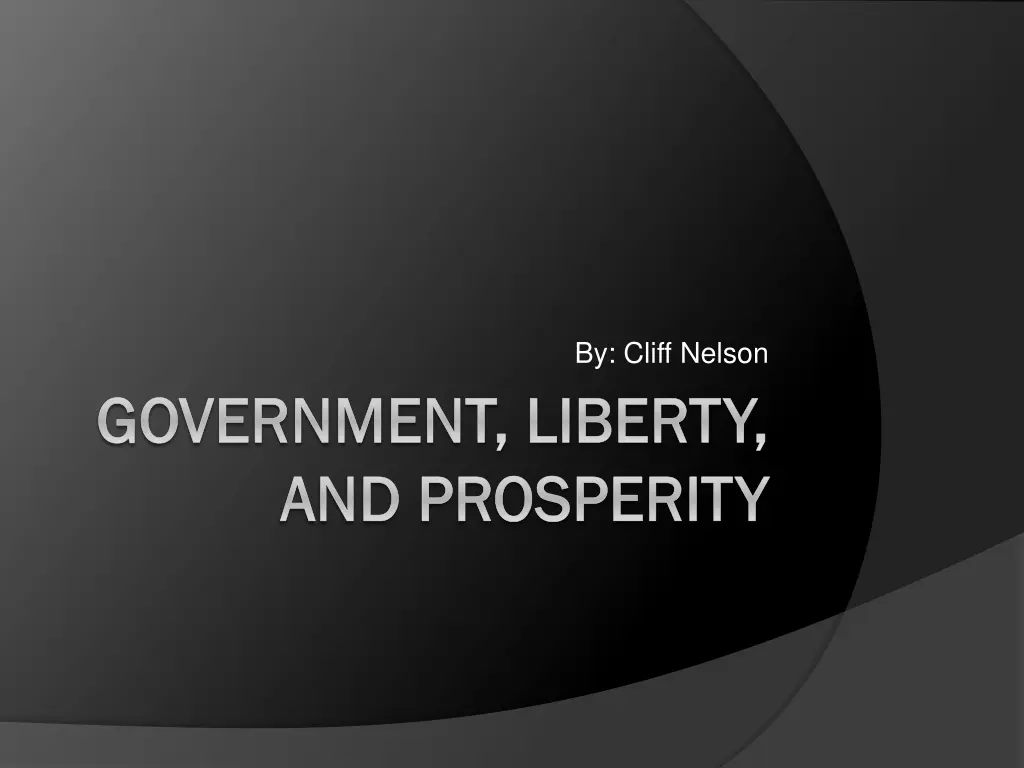
Government, Liberty, and Prosperity - Understanding the Role of Government in Society
Explore the relationship between government, liberty, and prosperity, and learn about the true cost of purchasing items in relation to income. Delve into fundamental questions about the nature and scope of governmental powers, the definition of law, and the role of government in enforcing rules and regulations.
Download Presentation

Please find below an Image/Link to download the presentation.
The content on the website is provided AS IS for your information and personal use only. It may not be sold, licensed, or shared on other websites without obtaining consent from the author. If you encounter any issues during the download, it is possible that the publisher has removed the file from their server.
You are allowed to download the files provided on this website for personal or commercial use, subject to the condition that they are used lawfully. All files are the property of their respective owners.
The content on the website is provided AS IS for your information and personal use only. It may not be sold, licensed, or shared on other websites without obtaining consent from the author.
E N D
Presentation Transcript
By: Cliff Nelson GOVERNMENT, LIBERTY, GOVERNMENT, LIBERTY, AND PROSPERITY AND PROSPERITY
How much do you have to earn to purchase a $100 item? Let x = pretax wage required to make a $100 purchase. Assume: 6.2% Social Security tax on income (employee s portion) 1.45% Medicare tax on income (employee s portion) 25% marginal Federal income tax rate 6% marginal California income tax rate 8.75% sales tax rate (Santa Rosa, CA)
True Cost of Purchase x-(.062x+.0145x+.25x+.06x)=100(1.0875) x-.3865x=108.75 .6135x=108.75
True Cost of Purchase x-(.062x+.0145x+.25x+.06x)=100(1.0875) x-.3865x=108.75 .6135x=108.75 x=177.26 $177.26 pretax income is needed to purchase an item costing $100.
Two Key Questions What is government? What is the proper scope of governmental powers?
Outline Define law and government Regulation without government Why government power is often abused Deadweight loss from taxation
What is Law? Rules of Behavior Coercive Rules
What is Law? Personal property may be seized and/or physical force may be used in order to enforce these rules Rules of Behavior Coercive Rules but not these rules.
What is Law? Rules of Behavior Law Coercive Rules
What is Government? Government is a monopolist in the field of law.
What is Government? Government is a monopolist in the field of law. Government is a group of people who are widely perceived to have the exclusive right to make and enforce laws that are binding on everyone within a given territory.
Classic Definition of the State The state is a human community that (successfully) claims the monopoly of the legitimate use of physical force within a given territory. -Weber, M. (1970a) Politics as vocation , in H. H. Gerth and C. W. Mills (eds) From Max Weber. London: Routledge & Kegan Paul. Pg. 78. quoted in Pierson, Christopher. The Modern State (2nd Edition). New York: Routledge (2004)
The Implications of Force Force applied Consent couldn t be obtained Person perceives the action to be against his interests. Strife and bad will created
An Argument for Government Regulation Premise 1: Either government regulates human action or there is no regulation of human action. Premise 2: Having no regulation of human action is unacceptable. Conclusion: Government must regulate human action.
An Argument for Government Regulation Premise 1: Either government regulates human action or there is no regulation of human action. Premise 2: Having no regulation of human action is unacceptable. Conclusion: Government must regulate human action. A valid argument, but not a sound argument!
False Premise Premise 1: Either government regulates human action or there is no regulation of human action. Premise 2: Having no regulation of human action is unacceptable. Conclusion: Government must regulate human action. A valid argument, but not a sound argument!
Non-Governmental Regulations 1) Conscience of the individual 2) Community expectations 3) Competitive pressure 4) Civil liability
Oil Spill Act of 1990. Section 2704 Limits on Liability (a) General rule. Except as otherwise provided in this section, the total liability under section 2702 of this title and any removal costs incurred by, or on behalf of, the responsible party, with respect to each incident shall not exceed- (3) for an offshore facility except a deep water port, the total of all removal costs plus $75,000,000.
To drill or not to drill? Let X = profit (in millions of dollars) from drilling in a risky area. Suppose X = 100 if no spill and X = -10,000 if spill. Suppose a spill has a probability of 0.01. E(X) = 100(0.99) + -10,000(0.01)= -1 Don t drill!
After the liability cap After cost of regulatory compliance Suppose X = 90 if no spill and X = -575 if spill. 75 liability + 500 clean up E(X) = 90(0.99) + -575(0.01)= 83.35 Drill, baby, drill!
Regulatory Capture [E]very detailed study of the emergence of legal norms has consistently shown the immense importance of interest-group activity, not the public interest, as the critical variable in determining the content of legislation. -Chambliss and Seidman, Law, Order, and Power, p. 73 quoted in Benson, Bruce L. The Enterprise of Law: Justice Without the State. Oakland, CA: The Independent Institute, 2011. Pg. 106
Why wont the government stop harmful programs? Individual Benefit -200 10,000 Number 100 M 1 M Total Total -20,000 M 10,000 M -10,000 M Net loss to society.
Why wont the government stop harmful programs? Individual Benefit -200 10,000 Number 100 M 1 M Total Total -20,000 M 10,000 M -10,000 M Individual Political Pressure -1 1,000 Number Total 100 M 1 M Total -100 M 1,000 M 900 M Net pressure to implement.
A special interest group (SIG) is an organized minority who use government to benefit themselves at the expense of the rest of society. Majority Minority
Rational choice: Not worth complaining about. Not worth while becoming informed. Rational choice: Apply intense pressure on politicians to keep the status quo. $200 per person per year Majority $10,000 per person per year Minority
Politicians Viewpoint Majority s interest SIG s interest Rational Decision: Cater to the SIG.
Public Choice Theory Concentrated benefits and disbursed costs. Ex: 1) Tariffs and import quotas 2) Agricultural subsidies 3) Occupational licensure
Regulatory Capture Tariffs and import quotas. Economists overwhelmingly favor free trade- apparently, the freer the better. -Based on responses to surveys sent to 210 randomly selected Ph.D. economists - Do Economists Agree on Anything? Yes! By Robert Whaples (2006) Emphasis in the original.
Regulatory Capture Occupational Licensure Indeed, the bulk of the studies that measure the impact of certain licensing restrictions on quality find little, if any, quality enhancement. -Cox, Carolyn and Susan Foster. The Costs and Benefits of Occupational Regulation (1990). Pp vii-viii. Prepared by staff members of the Bureau of Economics of the Federal Trade Commission.
Hypothesis Testing and the FDA Ho: The drug is not safe. Ha: The drug is safe. Type I error: Approve a drug that is not safe. Type II error: Fail to approve a drug that is safe.
Costs vs Benefits By now considerable evidence has accumulated that indicates that FDA regulation is counterproductive, that it has done more harm by retarding progress in the production and distribution of valuable drugs than it has done good by preventing the distribution of harmful and ineffective drugs. - Friedman, Milton and Rose Friedman. 1990. Free to Choose: A Personal Statement. San Diego: Harcourt Brace Jovanovich. Pg 205-206 Retrieved from http://www.fdareview.org/12_quotations.php
Costs vs Benefits The policy experts who have evaluated the costs and benefits of drug regulation have almost uniformly concluded that the costs of the regulations are not worth their benefits. -Holcombe, Randall. 1995. Public Policy and the Quality of Life: Market Incentives versus Government Planning. Westport, CT: Greenwood Press. Pg. 116 Retrieved from http://www.fdareview.org/12_quotations.php
Multivariable Health Function Let b = unique bodily characteristics p = probability of successful treatment of condition r = personal risk aversion a = capacity to handle adverse side effects Then f(b,p,r,a)= take medication or don t take medication.
Taxes Taxes: A Supply and Demand Analysis. p Supply 8 4 Demand Q 6
Blue area: Consumer surplus = bh/2 = (6)(4)/2 = 12 Red area: Producer surplus = bh/2 = (6)(4)/2 = 12 Total: 24 p Supply 8 4 Demand Q 6
$2 per unit tax imposed on consumers. The new price is $3. After tax the price is $5. The new quantity is 4.5. p Supply 8 6 4 3 Demand Q Demand after tax 4.5 6
New consumer surplus: (4.5)(3)/2 = 6.75 New producer surplus: (4.5)(3)/2 = 6.75 Tax revenue: (4.5)(2) = 9 Total: 22.5 Former surplus: 24. Dead weight loss = 1.5 p Supply 8 6 5 4 3 Demand Q Demand after tax 4.5 6
Subsidies Source: Subsidy. Wikipedia.org
Amount of Deadweight Loss Estimates of marginal excess burdens are substantial. They indicate that the transfer of an additional dollar to the government causes a deadweight loss in the range of 17 to 56 cents. -Ballard, Charles L. et. al. General Equilibrium Computations of the Marginal Welfare Costs of Taxes in the United States.The American Economic Review, Vol. 75, No. 1. (Mar., 1985). Pg. 135.
Amount of Deadweight Loss [F]inancing additional government spending by an across the board rise in all marginal tax rates would make the cost per dollar of government spending equal to $1.76. -Feldstien, Martin. The Effect of Taxes on Efficiency and Growth. (Working Paper). NBER, Cambrige, MA. (2006) Pg. 11. Found http://www.nber.org/papers/w12201.pdf


